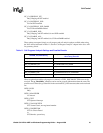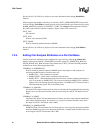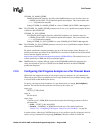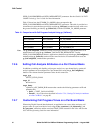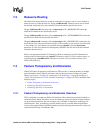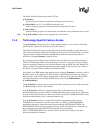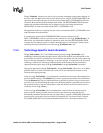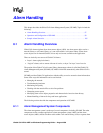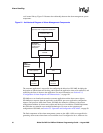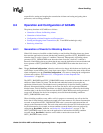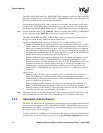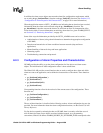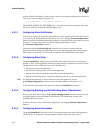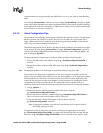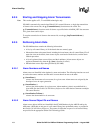
Global Call API for HMP on Windows Programming Guide — August 2006 97
8
8.Alarm Handling
This chapter describes the Global Call Alarm Management System (GCAMS). Topics include the
following:
• Alarm Handling Overview. . . . . . . . . . . . . . . . . . . . . . . . . . . . . . . . . . . . . . . . . . . . . . . 97
• Operation and Configuration of GCAMS . . . . . . . . . . . . . . . . . . . . . . . . . . . . . . . . . . . 99
• Sample Alarm Scenarios . . . . . . . . . . . . . . . . . . . . . . . . . . . . . . . . . . . . . . . . . . . . . . . . 105
8.1 Alarm Handling Overview
Global Call alarms originate from alarm source objects (ASO). An alarm source object can be a
network library, a call control library, or it can reside within a call control library. Some alarm
source objects are for internal Global Call use only and are not available to the application.
There are basically two sources of Global Call alarms:
• Layer 1 alarms (physical alarms)
• “Logical” alarms, such as remote side out of service, or layer 2 or layer 3 out of service
The portion of the Global Call call control library that manages alarms is called the Global Call
Alarm Management System (GCAMS). GCAMS is initialized automatically when Global Call is
started.
GCAMS provides Global Call applications with the ability to receive extensive alarm information.
Some of the ways this information can be used include:
• Managing the network
• Troubleshooting hardware
• Monitoring line quality
• Working with the central office to solve line problems
• Generating status reports
• Modifying alarm source object properties and characteristics based on alarm history
• Manual handling of alarms for drop and insert applications.
The following sections describe the components and operation of GCAMS.
8.1.1 Alarm Management System Components
The alarm management system is made up of several components, including GCAMS. The other
components are the customer application’s alarm management system (AMS), and the alarm
source objects (ASOs). ASOs can either reside within a call control library (cclib) or separate from



